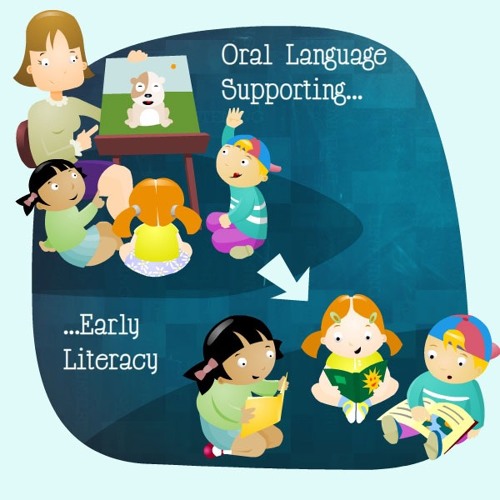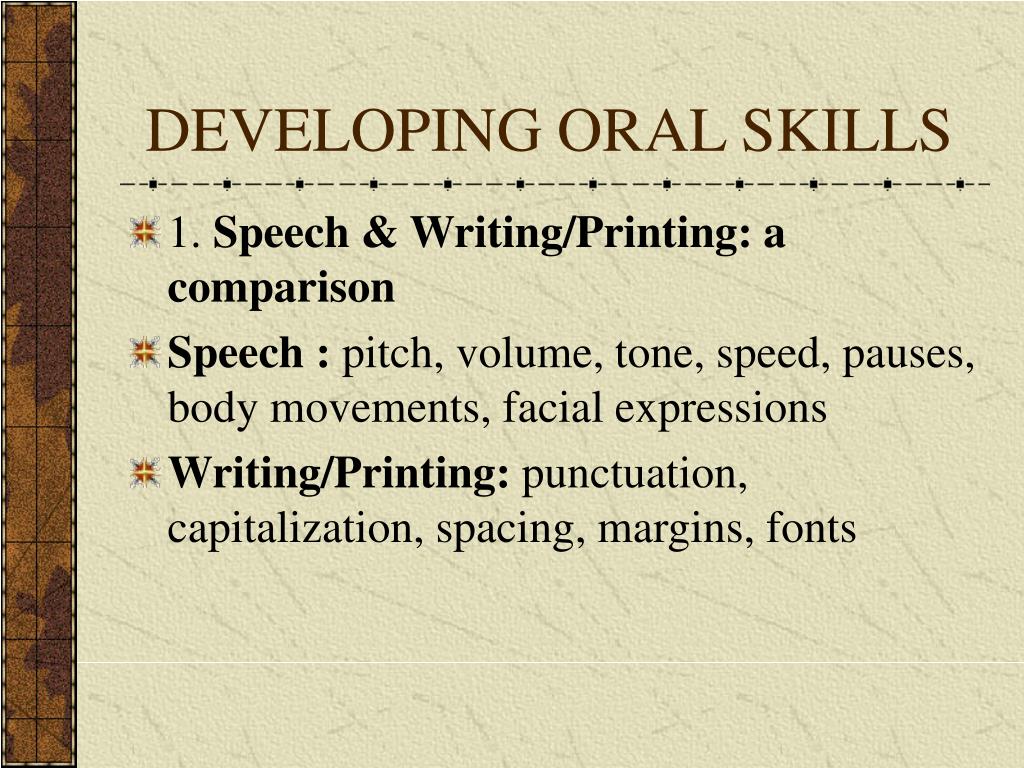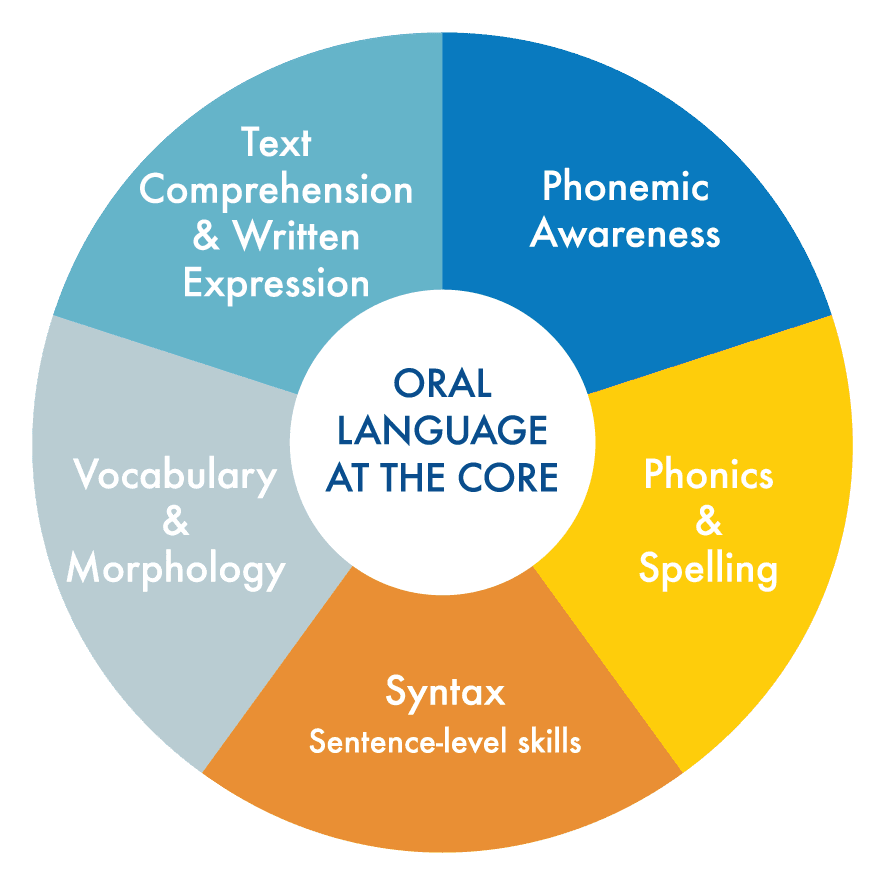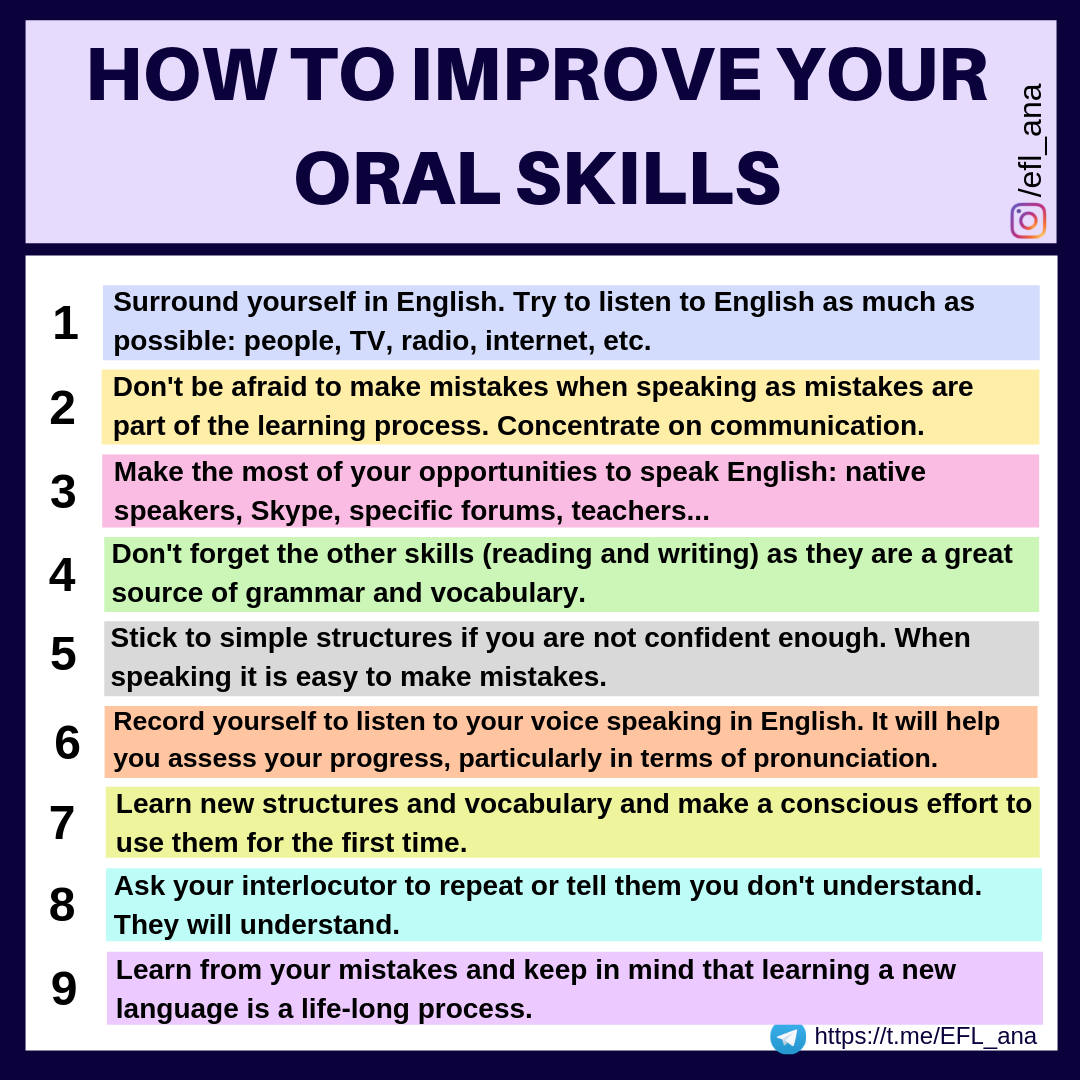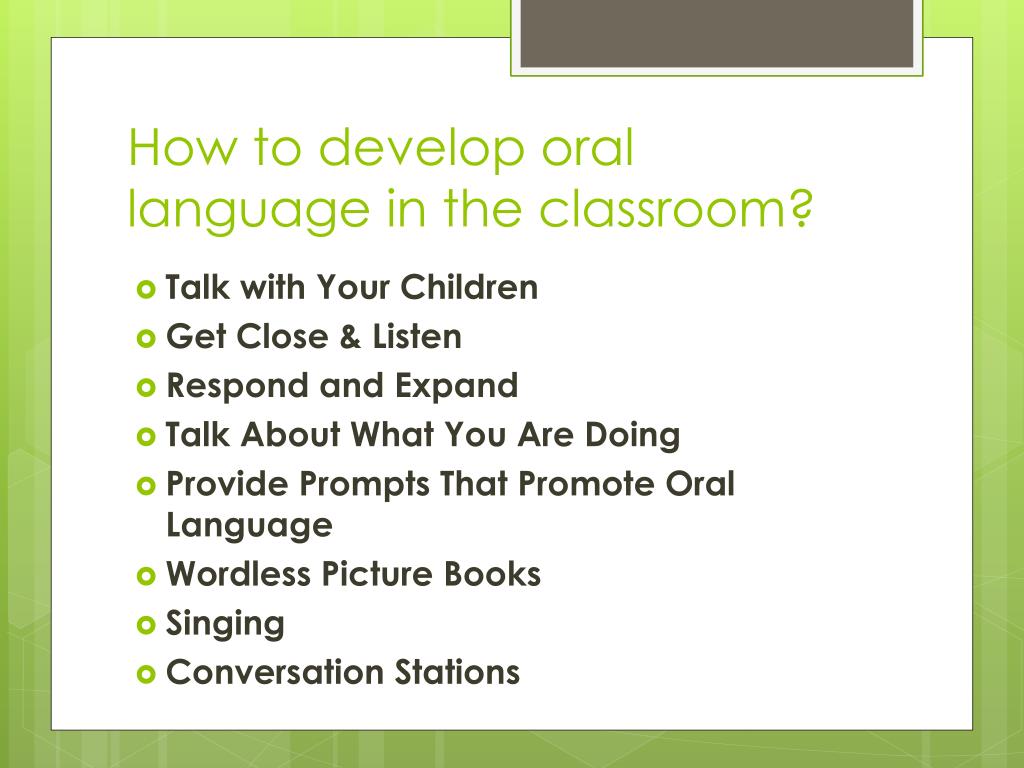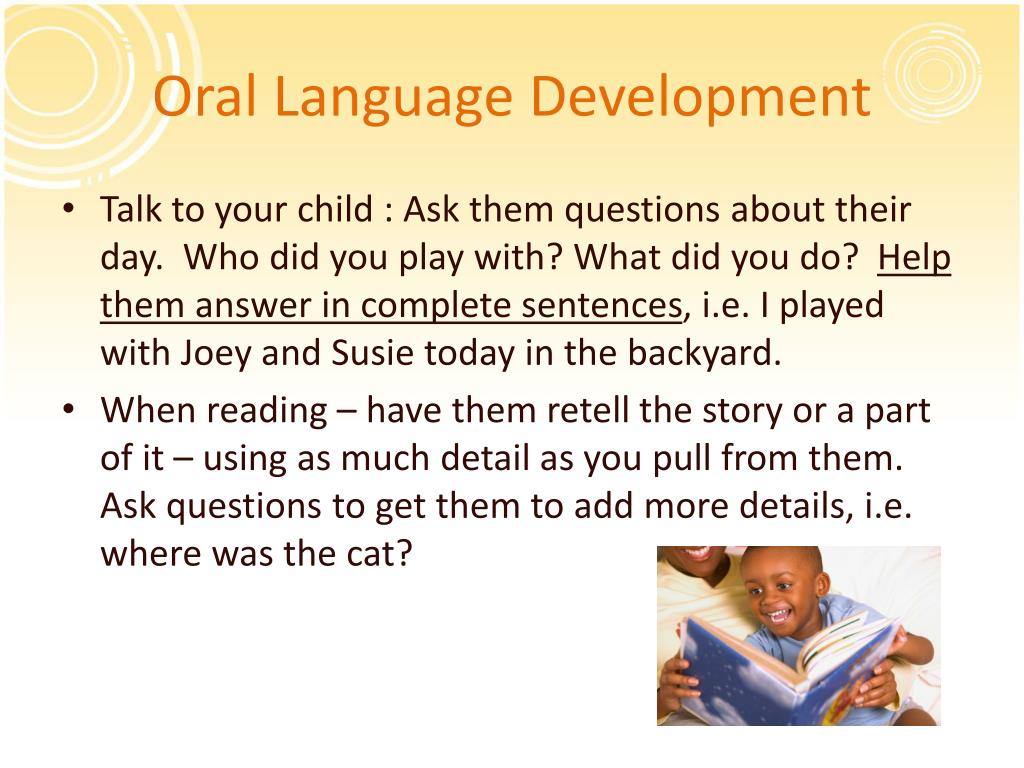Beautiful Info About How To Develop Oral Language

After assessing their performance, he goes on to examine four ways to support learners in developing conversation skills in english.
How to develop oral language. Based on a systematic review of the australasian literature, evidence for learning has three tips sheets on oral language. Tip sheets on oral language development for educators. In this blog post, we.
Effective speaking and listening instruction literacy teaching toolkit effective speaking and listening instruction the foundational role that oral language plays in learning to read. This article provides readers with a concise overview of the why and how to develop two dimensions of oral language, output and interaction, across disciplines. Key oral language skills include expressive and receptive vocabulary, listening comprehension, and grammatical knowledge, all of which are critical for future reading.
You can support this oral language. As a parent, teacher, or therapist, there are many things you can implement to foster the development of strong oral language skills of your child. Ask and answer questions.
Oral language interventions (also known as oracy or speaking and listening interventions) refer to approaches that emphasise the importance of spoken language and verbal. Every social interaction gives students a new opportunity to practice language. Add to favorites.
This is most apparent in. A child’s oral language ability provides the foundation for learning at school. Oral language is incredibly important in enabling children’s social and cognitive development.
Oral language interventions are based on the idea that comprehension and reading skills benefit from explicit discussion of either content or processes of learning, or both, oral. Some of your students might need a little guidance from you to engage in conversations, so spark interactions whenever you can. Read aloud to your child at least once a day.
Teachers who are aware of the relationship between oral language and phonological awareness can design learning tasks and focused instruction, which incorporate the. Ask questions, rephrase the student’s answers, and give prompts that encourage oral conversations. Give students lots of chances to interact with the language they are learning and practice their speaking skills with academic language.

